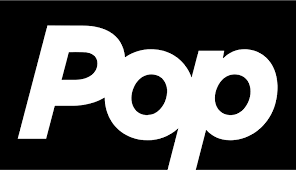Different Hair Types and Hair Care Tips
A crucial component of self-care is hair care. Exposure to harsh environmental factors, chemicals like bleach, artificial hair colors, and heat styling treatments can cause damage to your hair. As a result, maintaining the health of your hair requires adhering to a regimen for hair maintenance.
Everybody has a different type of hair, and every type of hair needs different but appropriate treatments and regimens.
What Are the Different Hair Types?
Hair type typically refers to the shape of a person’s hair. A person’s ethnicity, the way their hair strands coil, and the structure of their hair follicles all contribute to determining their “hair type.”
Human hair can be broadly divided into four categories: straight hair, curly hair, wavy hair, and coily hair.
The two components of hair are the hair follicle and the hair shaft, or actual hair strand.
The cortex, surrounding cells, and, in thicker hair, a central medulla are the layers that make up the hair shaft. A person’s hair form is determined by the shape of their hair follicle. For instance, curly hair follicles have an S-shaped form.
| Hair type | Hair Shape |
| Type 1: Straight |
|
| Type 2: Wavy |
|
| Type 3: Curly |
|
| Type 4: Coily |
|
1. Hair Type I: Straight
The most popular and easiest hair type to maintain is straight hair. Because it has more oil or sebum stored in its strands, it is typically softer and easier to manage. Five
Based on the strand thickness, straight hair is further classified into three types: fine straight hair, medium straight hair, and coarse straight hair.
2. Hair Type II: Wavy
In between curly and straight hair is where wavered hair falls. Hair care professionals frequently refer to the extremely delicate natural curl that characterizes people with wavy hair as “waves.”
Again, it is separated into three categories: thick, medium, and fine wavy hair.
3. Hair Type III: Curly hair
Hair with noticeable curls that resemble loops along their length is referred to as curly hair. Generally thicker than other hair varieties, curly hair can become frizzy and dry if improperly cared for.
There are three categories of curly hair: loose curls, tight curls and S or Z shaped tight corkscrew curls.
4. Hair Type III: Kinky or Coily hair
Long, tight coils run the length of kinky hair. The hair has a distinctive “raised look” because of the coils. The hair is typically weak and brittle.
Although it can occur in other ethnicities as well, kinky hair is more common among African-Americans and is commonly referred to as “natural hair” in this community.
General Hair Care Tips
The American Academy of Dermatology (AAD) suggests that the following methods be tried by individuals for hair care:
- Wash oily hair more frequently: Wash hair that is oily more often. The amount of oil your scalp produces should determine how frequently you wash your hair.
- If your scalp is oily, you may need to wash it as often as once a day.
- If you have chemically treated hair, your hair may be drier, so you may want to wash it less frequently.
- Concentrate shampoo on the scalp: Washing the full length of your hair is not necessary; instead, focus on cleaning the scalp. Washing your hair alone can result in dull, coarse flyaway hair.
- Use conditioner after every shampoo unless you use a “2-in-1” shampoo that simultaneously cleans and conditions hair. Applying a conditioner can greatly enhance the appearance of damaged or weathered hair by boosting radiance, reducing static electricity, enhancing strength, and providing some UV protection.
- Concentrate conditioner on the tips of the hair: Conditioners should only be used to the tips of fine hair; they should not be used on the scalp or the length of the hair because they might make fine hair appear limp.
- Choose a shampoo and conditioner formulated specifically for your hair type: Use a shampoo made specifically for color-treated hair, for instance, if you color your hair. Think about using a “2-in-1” shampoo if your hair has been chemically treated or is damaged. Many brands of shampoo and conditioner offer the same advantages, regardless of price.
- Consume a well-balanced diet to ensure your hair gets nourished properly.
- Avoid too much stress as it can lead to hair fall.
Hair Care Tips for Straight Hair (Type I)
There is data that suggests sebum is carried by straight hair more readily than by curly hair. The oily, waxy material produced by a person’s skin is called sebum. Accordingly, those who have straight hair may be more prone to oily hair than those who have curlier hair.
Those who have straighter hair may therefore want to refrain from using certain hair products excessively. These consist of:
- Any hair product designated for dry hair
- Oils, such as olive, coconut, and jojoba oil
- Oil-based styling products
- Leave-on products
Straight haired people might need to take a more careful approach to hair care. This could entail:
- Choose the right shampoos
- Gently drying the hair with a towel
- Use the reverse washing method – The term “reverse washing” describes the hair washing technique that involves using conditioner before shampoo.
- Use dry conditioner
- Avoid over-brushing, excessive perming, and too much heat
- Brush or comb your hair gently
Hair Care Tips for Wavy Hair (Type II)
- Opt for the appropriate shampoo to prevent frizz and dryness.
- Detangle your hair – Never attempt to detangle your hair with a hairbrush or narrow-toothed comb. Always use a wide-toothed comb on your hair. It is best to detangle your hair in the shower after applying hair conditioner to avoid hair breakage.
- Give your hair a deep conditioner treatment.
- Air-dry your hair – use a gentle cotton towel to let your hair air dry and avoid hair blow-dryers.
- Make use of silk pillows – Frizzy hair in the morning can be avoided by sleeping with a silk pillowcase or silk cap, which decreases friction between your hair and pillow.
- Style your hair properly
Hair Care Tips for Curly Hair (Type III)
Excessive brushing can harm your curl definition. As a result, it could take some trials to determine how often to brush curly hair.
Some other care tips for curly hair include:
- Reducing shampoo usage.
- Use oil – Hair oils keep your curls soft and moisturized.
- Do not overcleanse your hair and rinse with cold water.
- Let your hair air dry or use a diffuser on a blow dryer.
- Avoid dense combs and brushes.
- Apply a leave-in conditioner after conditioner.
Hair Care Tips for Coily/Kinky Hair (Type IV)
- Use a hair mask.
- Use moisturizing sulfate-free shampoo – It is best to use shampoos that are free of sulfates as they tend to dry your hair and make them frizzy.
- When brushing, be gentle with your hair.
- Properly style your hair – Don’t blow dry your hair because it dries out the curls and makes them difficult to manage. Rather, use a gentle cotton towel to pat dry your hair and slather on a leave-in conditioner following every hair wash.
- Don’t constantly tug, twist, or pick at your hair.
- Whenever you comb through and detangle your hair, use a wide-toothed comb.


